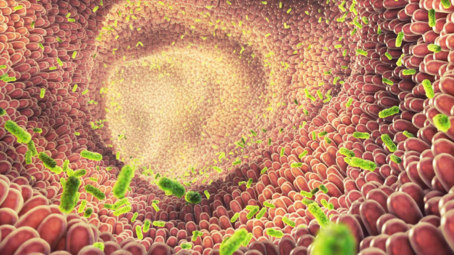
Is it true that there are more microbes than cells in the human body?
It’s hard to go shopping these days without encountering products claiming to protect our microbiota! It’s often said that our bodies host ten times more bacteria than human cells. But is that really true?
The microbiota, or microflora, refers to the microorganisms that naturally reside in our bodies. Its secrets were popularized by Dr. Giulia Enders in her book Gut: The Inside Story of Our Body’s Most Underrated Organ. This bestseller greatly contributed to the fascination with the subject! However, the discovery of the intestinal microbiota dates back more than a century, thanks to microbiologist Élie Metchnikoff, who won the Nobel Prize in Medicine in 1908. Over time, technological advances have made studying the microbiota easier. In 1977, American microbiologist Dwayne Savage introduced the famous ratio of one human cell to ten bacteria.
Quantities of microbes and cells: hard to measure
In 1972, biochemist Thomas Luckey estimated that each gram of human feces contained 100 billion bacteria and that the digestive system held about one kilogram. Based on these calculations—and considering that most bacteria reside in feces—it was estimated that the human body hosts 100 trillion bacteria. In 1977, Professor Savage’s team compared this number to the estimated 10 trillion human cells, leading to the widely cited 1:10 ratio. This proportion quickly gained traction in the scientific community due to its simplicity and ability to illustrate the concept of intestinal microflora. It is still taught in biology classes and popular science discussions today.
Nearly forty years later, in 2014, microbiologist Judah Rosner published a letter in the now-defunct scientific journal Microbe, challenging the 1:10 ratio. His introduction highlighted a paradox: “Science is governed by critical reanalysis of facts. [...] But once a fact becomes entrenched in scientific literature, it eventually becomes difficult to erase.” Rosner noted that the 10 trillion-cell estimate first appeared in a book in 1970 but was not properly cited. He also pointed out that estimating the number of human cells is itself a significant challenge. He concluded that even if the ratio were disproven, it wouldn’t undermine the microbiota’s importance to human health.
A matter of method
Two years after Rosner’s letter, Israeli researchers debunked the longstanding ratio. Professor Ron Milo’s team selected the organ whose bacterial population best represented the body’s bacteria. The microflora of the mouth, lungs, or skin wasn’t included, as these contain far fewer bacteria than the large intestine. They also noted that the colon contains about 400 grams, not one kilogram, of fresh feces. The team drew on an Italian study that calculated the number of human cells organ by organ, considering the significant variation in cell size and mass across the body.
This approach increased the estimated number of human cells threefold to 30 trillion. The revised bacteria-to-cell ratio was refined to 1.3:1. Although lower than 10:1, bacteria still outnumber human cells.
However, every time you go to the bathroom, this balance shifts, temporarily making human cells more numerous!
Viruses, bacteria, and protozoa inhabit our bodies
While bacteria are the most studied component of the intestinal microbiota, they don’t represent the full complexity of the microflora. Bacteria, yeasts, protozoa (single-celled microscopic animals), and viruses all inhabit our bodies. Our “virobiota” was once thought to vastly outnumber all other components. However, studies in 2021 revised this assumption, suggesting the number of viruses in our bodies is comparable to that of bacteria. As a result, their combined numbers are similar to human cells.
But remember, when bacteria and viruses are counted together, they still outnumber human cells!
Valérie Lannoy, post-doctorate in microbiology, Sorbonne University
This article was republished from The Conversation under a Creative Commons. Read the original in French.
![]()
